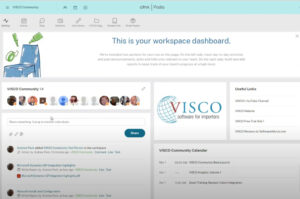In the start up phase many companies will use Microsoft Excel manage inventory as it is a simple to use software and most people are comfortable working in that environment. While volumes of transactions remain low and information only needs to be managed and seen by one person this solution will work quite nicely. However, business owners who are fortunate enough to experience growth in the business soon find the limitations of this environment can hold the company down and prohibit growth.
1-Version control-The minute that more then one person needs to access inventory in the company is the minute to are confronted with version control. Fortunately Microsoft Excel has some intelligence built in to not allow users to over write each others changes when accessing the same file at the same time. If one user is editing the inventory file and another wants to go in and make changes they are not able to. That user is allowed to view the file but must wait for the other user to save back his changes and exit the file before he can edit it. Again, this is fine for a spreadsheet that is used by one person or only used occasionally by others but we find that the inventory file is the life blood of many companies and must be updated every time a shipment comes in, a sale happens, a return, a transfer of inventory, or an adjustment for any reason. Therefore this file generally gets everyday use by many different types of people in the company and waiting for someone to close a program before you can sell product becomes very restrictive very quickly.
2-Lack of audit trail-One of the benefits of using Excel to manage inventory is that you can change any number you want whenever you want. One of the disadvantages of using Excel to manage inventory is that everybody else can also change any number they want whenever they want. When a number looks wrong there is no way of telling why it is wrong or who made the mistake. If you want to run credit lines with banks, they may need to audit your books regularly and this may impact your credit line. Not to mention, have you ever considered what happens if the file crashes?
3-Limited reporting-By nature, a spreadsheet is two dimensional and any reporting will be limited to the fields that exist in the spreadsheet. In contrast, by using a relational database like a full ERP system, you have the option to report inventory in relation to anything else related to the business like customers, sales people, vendors, etc.
4-Present tense only-By managing your inventory in a spreadsheet you are limiting your view of the business to how it is right now. The problem is that you are missing out on valuable information about past history which could be accessed by using a spreadsheet or more importantly you are missing the opportunity to make informed decisions about what your inventory position will be in the future. Particularly in the case or companies importing product from overseas, you need to factor in long lead times when considering inventory position and this is almost impossible to do well in the Excel environment.
At VISCO we use utilize Microsoft Excel as much as possible. However, it is used more effectively as a reporting tool to pull information out of the database and then perform calculations, etc so the user can still work in the comfortable Excel environment but is not limited by the two dimensions that Excel alone provides.





